You’ve invested in your pet’s nutrition, but are you truly monitoring their health through their eating habits? Smart pet bowls have revolutionized how we track our furry friends’ wellness, yet most owners aren’t maximizing their potential. These high-tech feeding solutions can detect early warning signs of illness, monitor hydration levels, and even alert your veterinarian to concerning changes. However, choosing the wrong features or using them incorrectly could mean missing critical health indicators.
Choose Smart Bowls With Real-Time Weight and Portion Tracking
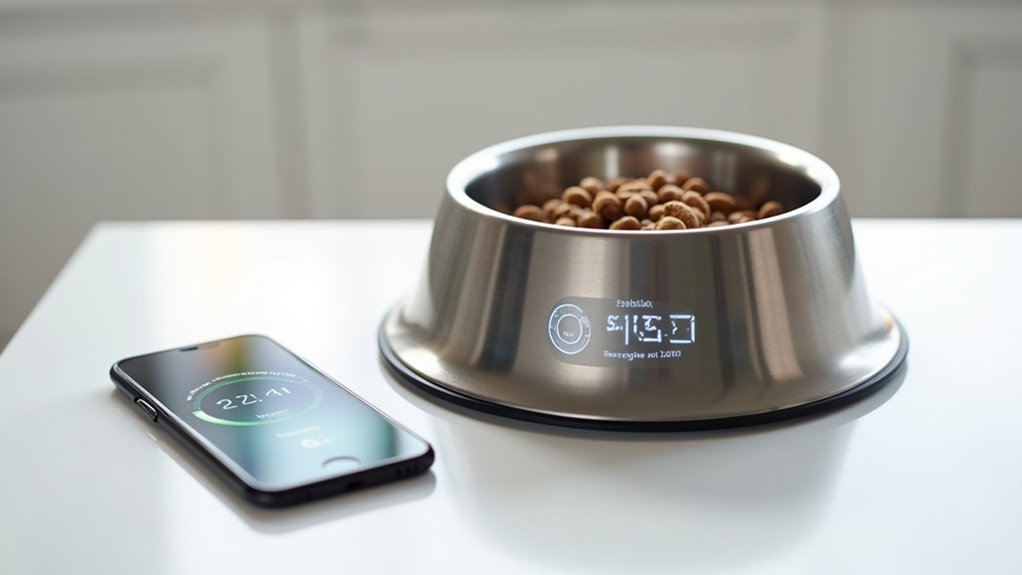
When you’re selecting a smart bowl for your pet, real-time weight tracking capabilities transform how you monitor your furry friend’s health.
These smart bowls accurately measure your pet’s food intake, giving you precise control over portion sizes to prevent obesity. As a pet owner, you’ll gain valuable insights into your pet’s feeding habits through connected mobile apps that analyze consumption patterns based on your pet’s dietary needs.
Smart bowls deliver precise portion control and valuable feeding insights through connected apps that analyze your pet’s unique dietary patterns.
Advanced sensors automatically dispense correct portions, ensuring consistent meals while tracking consumption over time.
This health monitoring system helps you identify significant changes in eating patterns that may signal health issues. You’ll receive notifications if your pet hasn’t eaten within set timeframes, enabling prompt intervention when necessary for ideal health management.
Select Bowls With Hydration Monitoring and Water Quality Sensors
Beyond monitoring food consumption, smart bowls with hydration tracking capabilities revolutionize how you oversee your pet’s water intake.
These advanced devices use water quality sensors to detect contaminants like bacteria and harmful chemicals, ensuring your pet drinks clean water consistently. The hydration monitoring features track drinking habits, providing real-time data on water consumption patterns that help identify potential health problems early.
You’ll receive smartphone notifications when water levels drop or become stagnant, maintaining freshness effortlessly.
Most importantly, these smart bowls assist pet owners in detecting serious conditions like kidney issues and diabetes by highlighting significant changes in drinking behavior.
This technology transforms routine pet health monitoring into a thorough system that protects your companion’s wellbeing proactively.
Prioritize Bowls With Health Alert Systems and Veterinary Integration
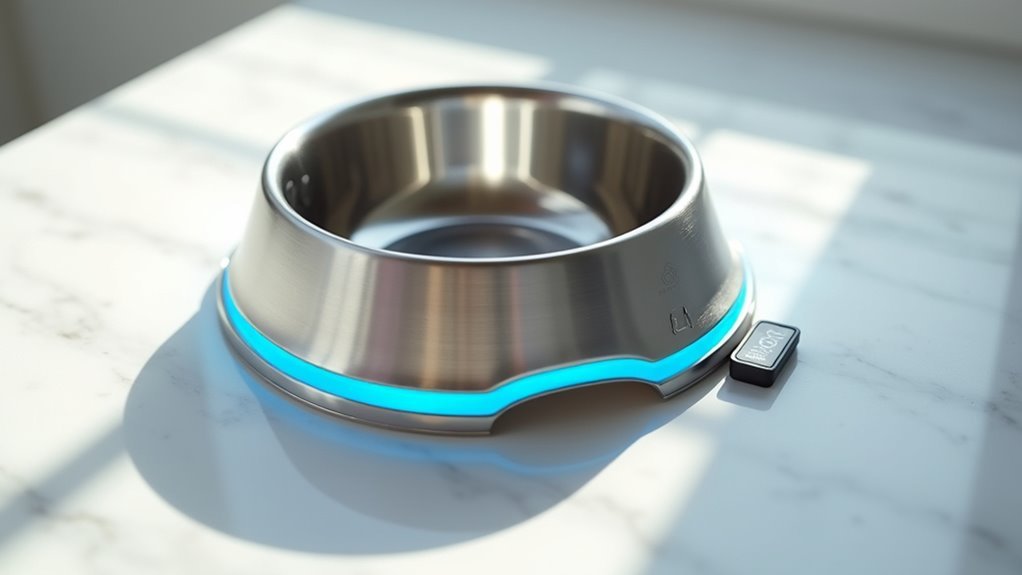
While hydration monitoring provides valuable insights, health alert systems with veterinary integration elevate pet care to a professional healthcare level. You’ll receive immediate alerts when monitoring technology detects abnormal consumption patterns that could indicate diabetes, kidney disease, or digestive disorders.
These systems track eating habits continuously, identifying subtle changes in food and water intake that signal potential health issues. Advanced bowls enable seamless data sharing with your veterinarian, providing real-time information for timely health assessments.
You can store vaccination records and medication schedules digitally, ensuring you never miss important treatments. This veterinary integration supports a proactive approach to your pet’s wellness, allowing early intervention when problems arise.
Prioritizing bowls with thorough health alert systems transforms routine feeding into strategic pet care management.
Frequently Asked Questions
Do Vets Recommend Elevated Dog Bowls?
Vets often recommend elevated dog bowls for larger breeds and senior dogs with joint issues, as they’ll reduce neck strain. However, you should consult your vet since they may increase bloat risk.
How Do You Prevent Biofilm in a Dog Bowl?
You’ll prevent biofilm by washing your dog’s bowl with hot, soapy water after each meal. Use stainless steel bowls, rinse thoroughly, dry completely before refilling, and avoid chipped ceramic dishes.
How High Should I Elevate My Dog’s Bowl?
You should elevate your dog’s bowl to their elbow height, typically 6-12 inches depending on size. Measure from ground to elbow for ideal comfort and reduced neck strain during meals.
Where Should a Dog Water Bowl Be Placed in the House?
You should place your dog’s water bowl in a quiet, low-traffic area away from their food bowl. Position it near their favorite resting spots on a mat to catch spills and prevent floor damage.

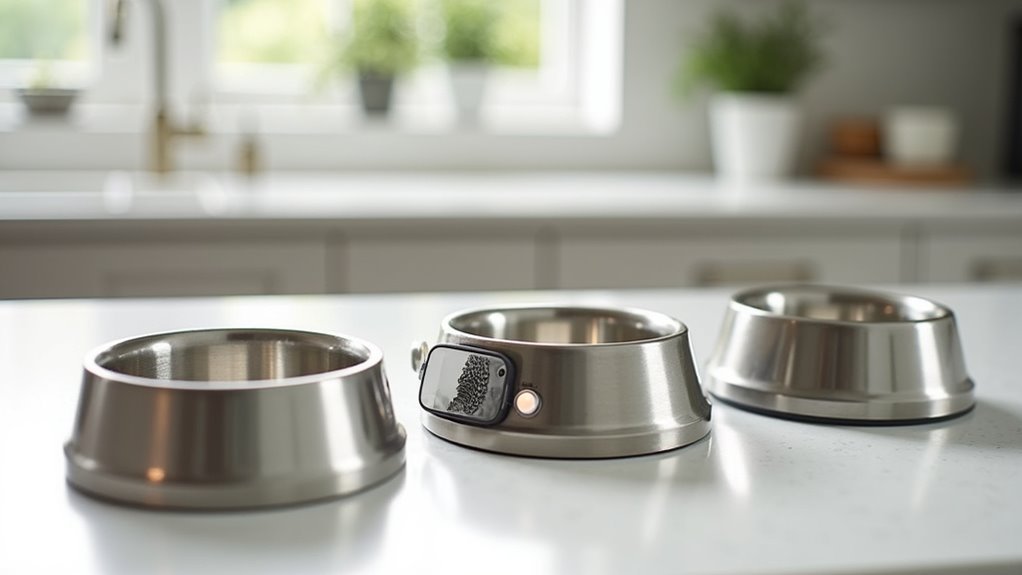
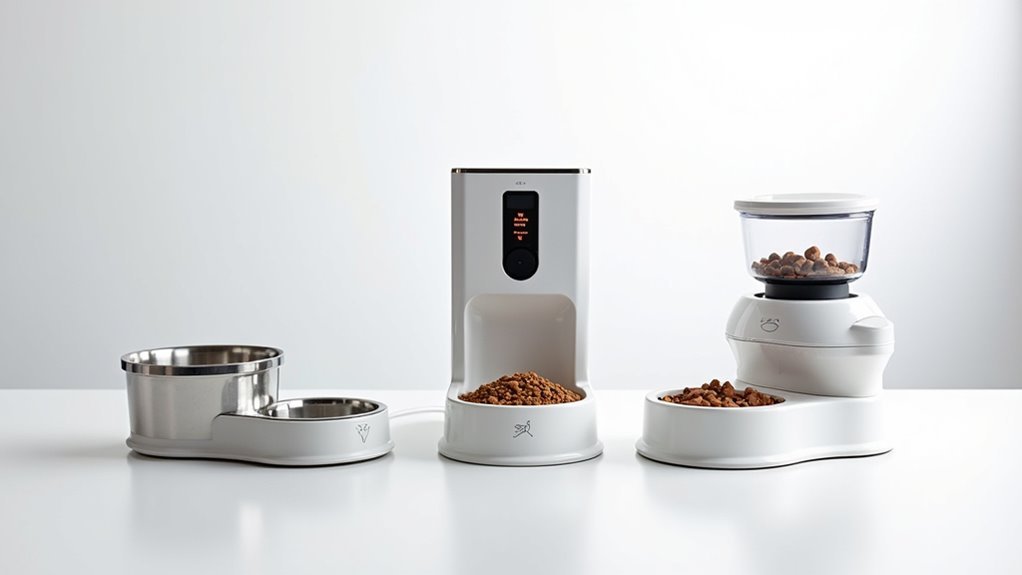
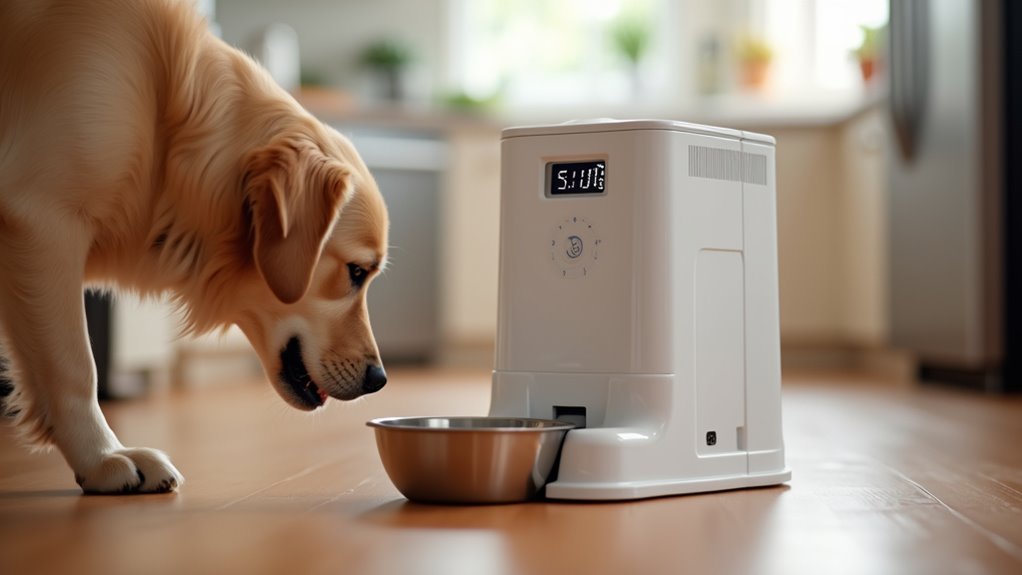
Leave a Reply